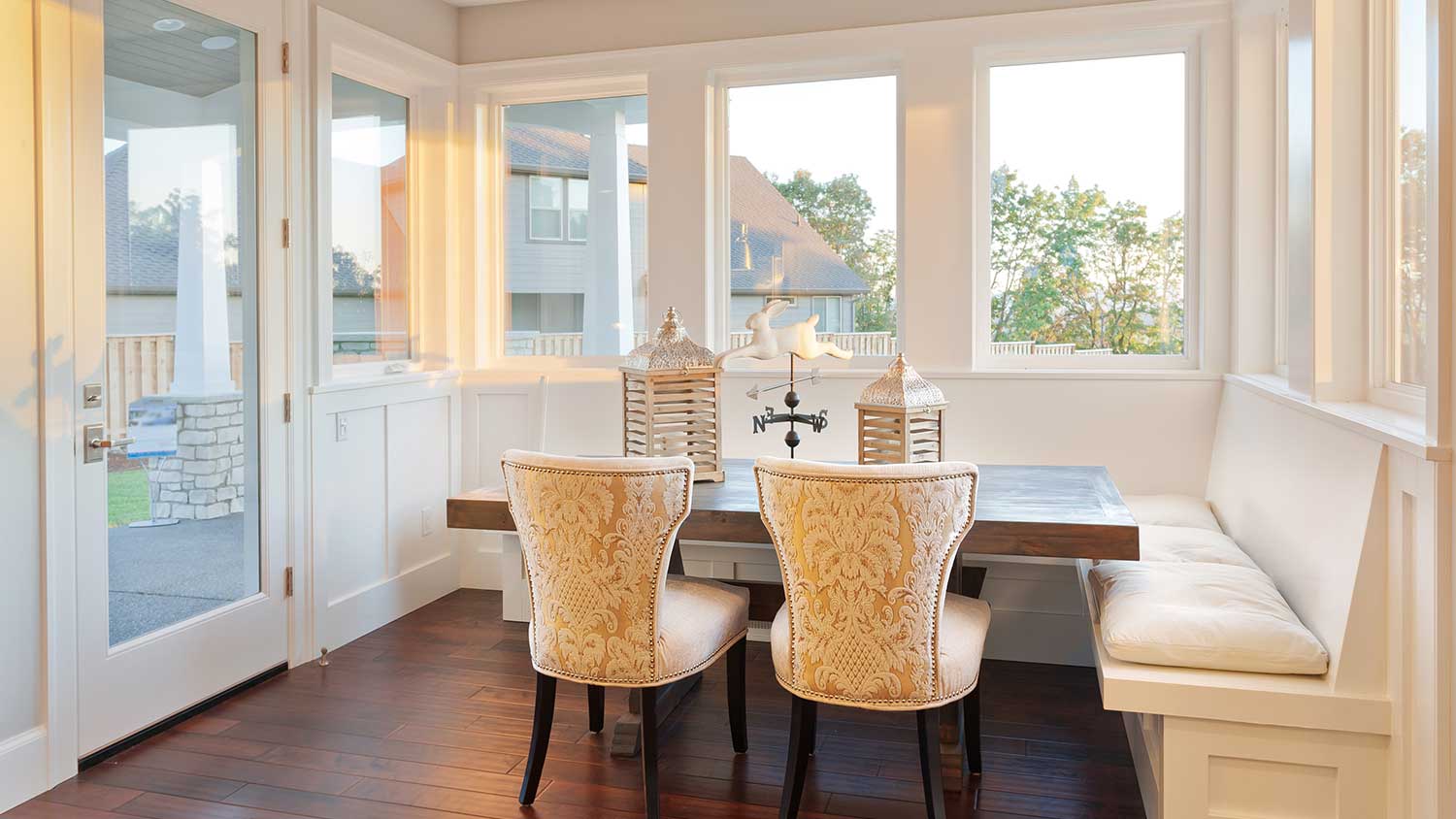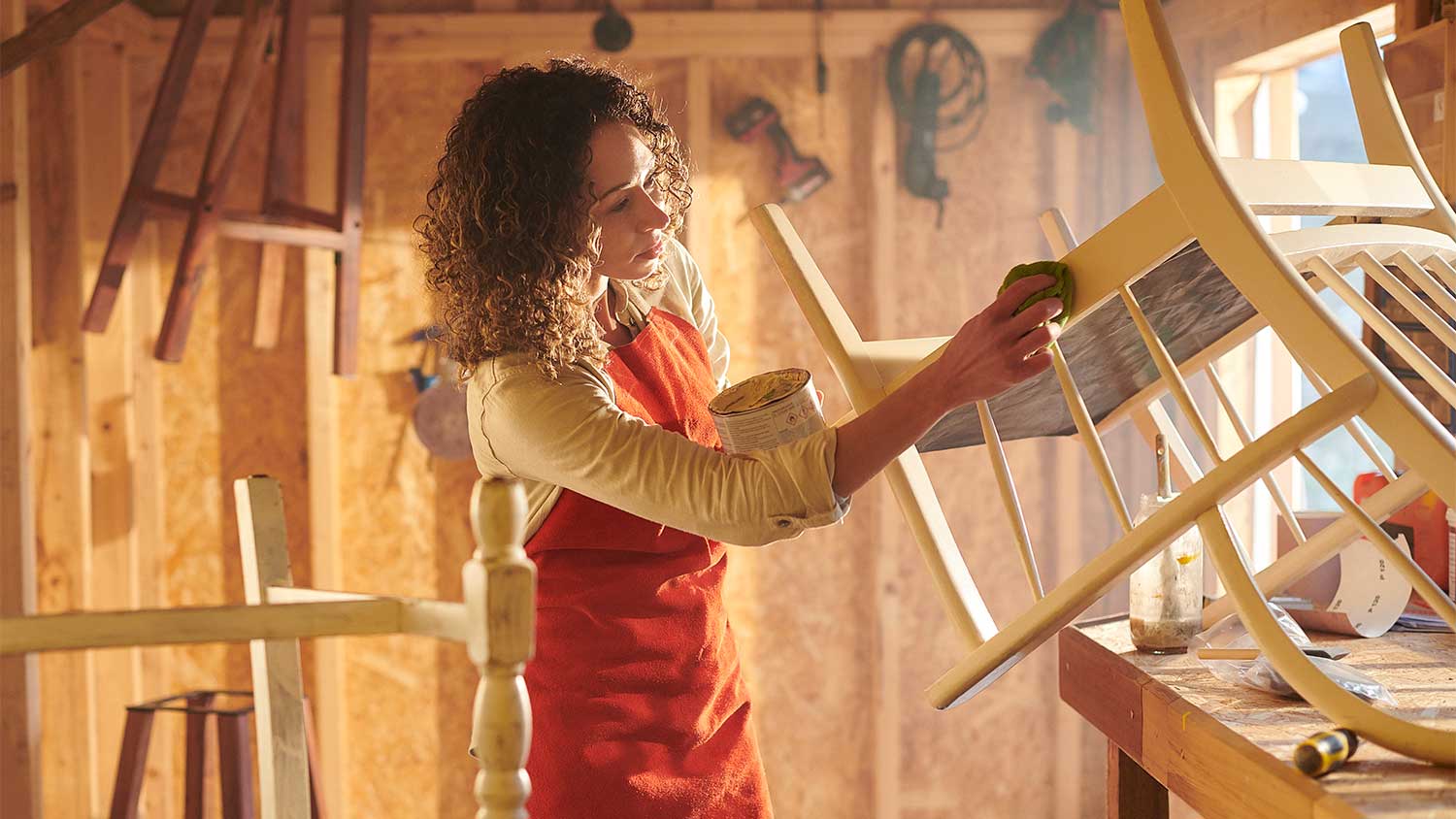
Discover the average furniture reupholstery cost, what impacts pricing, and how to save money on your next project. Get expert tips and cost breakdowns.
Consider this before going all-in on built-ins


Built-in furniture, or what the cool kids refer to simply as built-ins, are custom-made elements that become a permanent part of the home. Some built-ins provide storage, like bookshelves and recessed alcoves for appliances, while others provide unique seating or resting areas, like a Murphy bed or a breakfast nook.
Well-chosen furniture can add form and function to any room, but built-ins can really level up your current space. If you’re thinking about how to transform your home with built-in furniture, here are some things to consider.
Built-in furniture certainly has its advantages for your home. Here are some reasons you might want to call off that trip to the furniture store and get some quotes from local carpenters instead:
Instead of measuring ready-made furniture to see if it fits your space, you can measure your space and have the furniture built to fit it precisely. The sky—or rather, the ceiling—is the limit for built-ins, but you can also squeeze the most out of small and unusual spaces, too. One custom example that is the star of many social media posts are stair risers that have been transformed into bookshelves.
Many built-ins live up to their name and are actually built into the wall or into recessed areas. A custom element like a window seat essentially becomes the wall itself, rather than a bench or couch that takes up floor space. This is key in the kitchen especially, where bulky appliances like refrigerators or microwaves can blend seamlessly into the wall for a neater, streamlined look overall.
In addition to their functionality, built-ins add an attractive design element to the room. A sunny window seat becomes a cozy place to enjoy a cup of coffee or a good book. Built-in shelves in a living room can provide an attractive home theater setup, especially if a fireplace is included in the mix.

Unlike a piece of furniture that can be easily moved or even moved out completely when you’re reconfiguring a space, built-ins require a firm commitment. Here are some things to consider before you dive into a custom home improvement project:
Custom anything in a home is pricey because it’s being built from the ground up for your unique needs and your space’s dimensions. It’s no wonder that people will try to save money by purchasing ready-made furniture and attempt to arrange the pieces in a way that makes them look like built-ins—but it’s just not the same as the real thing.
For all we’ve been saying about built-ins making the most of the space, they put very clear limits on what you can do with the space if you ever decide to change things up. For example, if you’ve lined a room with bookshelves for a library or an office, it might be difficult to transform that room into a bedroom. If you are considering built-ins for a room, think ahead to resale. As much as home buyers like to see a staged property so they can understand its potential, they want to make their own mark on it—which can be hard to do when built-ins are dictating the use of the space.
When you sell your home, built-ins are considered fixtures and stay with the property—it’s even listed in the sales contract unless you negotiate otherwise. But even if you wanted to dismantle those bookshelves or that window seat, they were built to fit your current space, not your new space, so they’ll serve no purpose at all. So unless you have long-term plans to stay in your current home, save money and skip the built-ins.
From average costs to expert advice, get all the answers you need to get your job done.

Discover the average furniture reupholstery cost, what impacts pricing, and how to save money on your next project. Get expert tips and cost breakdowns.

Wondering how much it costs to refinish a table? Get average prices, cost factors, and tips to help you budget and choose between DIY or hiring a pro.

Get transparent furniture refinishing cost information and learn average prices, cost factors, and ways to save before hiring a pro and starting your project.

Have a piece of furniture that doesn’t work in your space or needs a refresh? Learn how to paint furniture at home with these simple steps.

Discover custom furniture costs, including average prices, cost factors, and tips to help you budget for your next custom piece.

Give your old furniture a fresh look with these tips for refinishing furniture, perfect for DIYers ready to restore and refresh.